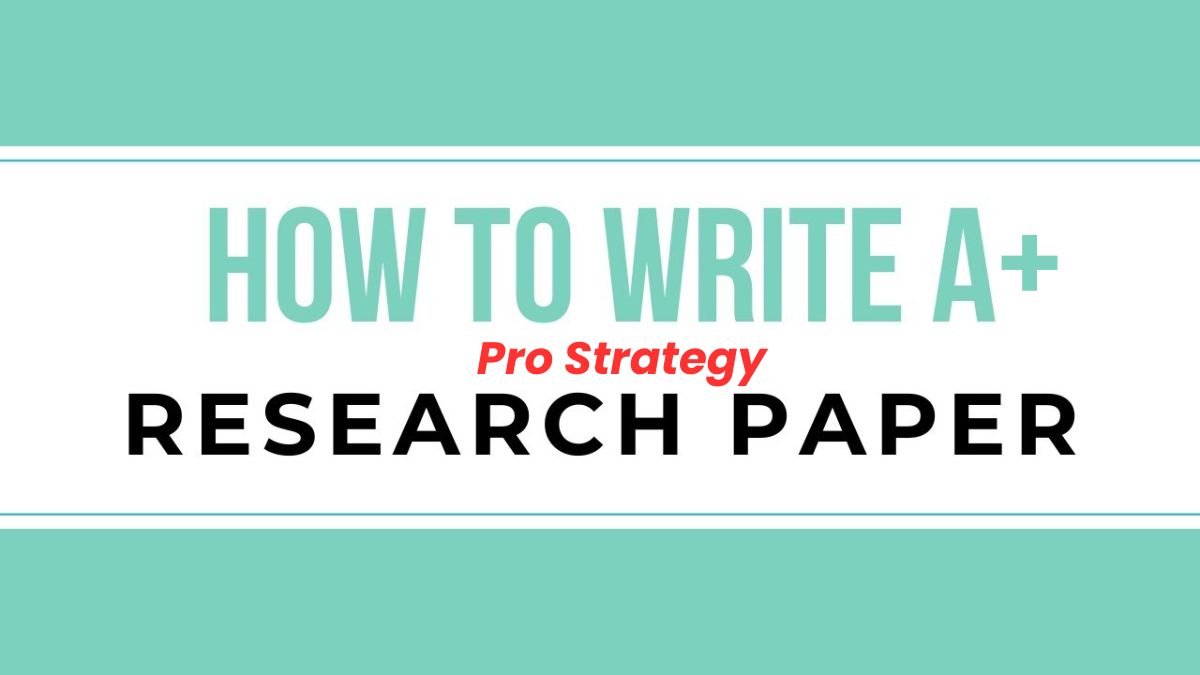At the beginning of college, when I started my first year, I had absolutely no idea how to write a research paper or term paper. The first year went by smoothly because most courses did not have writing assignments. But the second year came with a jolt — I had to write 8 final term papers at once!
This is where my real learning journey began. I had to create a way to research each paper, extract key points, and write a good paper. Now I am sharing with you the method that helped me get an A+ grade. Let’s make this journey easier:
1. How to choose a research topic?
Every professor gives some guidelines — some topics are fixed or the boundaries of a topic are set.
7 First of all:
- Read the rules for your topic and keep them in mind.
- Then, within those boundaries, think about which topic interests you the most.
Example:
If you are a student of Educational Psychology and you have to write a paper on learning strategies, then “Active Recall” (such as flashcards, quizzes, etc.) can be a great topic. It will also help you in your own studies.
Now comes the question – is there enough literature available on this topic?
Two easy ways to do this:
- Go to Google Scholar and search for the topic. If many articles are found, then it is a good sign.
- Or use AI Research Tools (such as Logically Research Assistant) that can create a summary of the topic for you.
2. Create your thesis statement
The thesis statement is the main conclusion of your research – the entire paper supports this statement. If you do not think of a thesis in the beginning, do not panic. Read the research and draw conclusions based on it.
Example:
If the research question is – “Does Active Recall improve test performance?”
So, understand the research you read and draw a conclusion — for example: “Active recall techniques improve test results.”
Then make a list of the different themes that support that conclusion — for different subjects, for different student groups, etc.
3. Make the topic more focused
If you have a lot of information and the topic is getting too broad, narrow it down.
You can use one of the following methods:
- Focus on just one subject (e.g. science)
- Choose one technique (e.g. just flashcards)
- Or narrow it down to both one subject and one technique (e.g. the effect of flashcards in math)
Example thesis:
“Flashcards improve test scores in math, science, social studies, and language arts.”
Now your paper outline is ready — there will be a section on each subject.
4. Make a research paper outline
Many times we sit staring at the screen and can’t write anything. The simple solution is to create an outline.
Include in the outline:
A. Introduction
- Importance: Why are you writing on this topic?
- Background: What is Active Recall? How does it work?
- Direction of the paper: State the thesis statement.
B. Body Sections
- Each section will be on a theme (e.g. “Effect of flashcards in science”)
- Each section will have:
- Conclusion of that theme
- Supporting research
- Short conclusion and transition to the next section
C. Conclusion
- Summary of the entire research
- Reiterating the thesis
- Importance of this conclusion
- What are the future prospects?
5. Adopt the PEER system while writing the paper
PEER is an easy formula that can help you make every paragraph effective.
PEER stands for:
- P (Point): What is the point (thesis or research findings)
- E (Evidence): Data or studies supporting that point
- E (Explanation): Explain in simple language what it means
- R (Repeat/Link): Either repeat or link to the next paragraph
Example:
Point: Sharma and team (2020) found that flashcards improved test scores in middle school science classes.
Evidence: Flashcards were incorporated in 40 classes and students in these classes performed better on tests.
Explanation: This shows that flashcards can help students even in difficult subjects.
Repeat/Link: Would this technique work at the high school or college level as well? (This sets up the next paragraph.)
6. How to write a conclusion?
Finally, when concluding your paper, include these points:
- Reiterate the importance of the topic
- State the main findings (thesis again)
- What will be the impact of your research?
- What future research could be done?
Final advice
A good research paper is not just informative, it tells a story — of your topic, your findings, and your ideas.
Every time you write a paper like this, you’re not just earning a grade — you’re learning the art of thinking, understanding, and sharing.
So the next time you have a term paper, keep this guide handy and start with confidence. You can get an A+ — you just need to get started!









